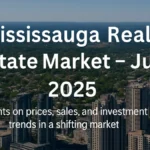The Miami Real Estate Market in 2024: Boom or Bust?
Miami has long been more than just a sun-soaked vacation spot. While the city’s pristine beaches and vibrant nightlife are global attractions, it is Miami’s booming real estate market that has captured the attention of investors, developers, and homebuyers alike. In 2024, the Miami real estate scene is a hub of activity and opportunity, driven by an influx of new residents, international investment, and a rapidly evolving urban landscape.
The demand for real estate in Miami has been fueled by a variety of factors. These range from the city’s low tax burden and strategic location to its growing reputation as a center for finance, tech, and international business. The city’s real estate options are as diverse as its population, appealing to everyone from first-time homebuyers to affluent investors seeking luxury properties.
For those captivated by sleek, oceanfront high-rise condos (Miami condos for sale), the market offers a wide range of options that come with stunning views and top-tier amenities. On the other hand, renters are also flocking to the city, drawn by the opportunity to live in centrally-located apartments or quaint pied-à-terres (Miami condos for rent) close to Miami’s cultural and business districts. Whether you’re looking to buy, rent, or invest, understanding the dynamics of Miami’s real estate market in 2024 is essential.
In this detailed analysis, we’ll explore the key factors driving the market, from rising demand and population growth to international investment and the impact of short-term rentals. By dissecting these trends, we aim to provide a comprehensive look at whether Miami is headed for a real estate boom—or if potential risks could signal a market correction.
This comprehensive analysis delves into the intricate workings of Miami’s real estate market in 2024. We’ll meticulously dissect the following:
Current Trends & Influences :
Economic Boom: Driving Real Estate Demand
Miami’s economy has become a major engine of growth, fueled by a diverse range of industries. While tourism has always played a significant role in the local economy, Miami has expanded its economic base to include sectors like finance, technology, international trade, and healthcare. This diversification has helped the city weather economic fluctuations and emerge as a hub for business activity, attracting companies and professionals from all over the world.
In recent years, Miami has successfully attracted several corporate headquarters, particularly in the tech and financial sectors. The rise of remote work and tax-friendly policies has prompted many companies to relocate to the city, fostering a significant increase in job growth. With new job opportunities, professionals from across the U.S. and internationally are moving to Miami in search of career prospects and a higher quality of life. This influx of workers has led to increased demand for real estate, particularly condos for sale and rent.
The economic boom also means more disposable income for Miami residents and investors, which has translated into a growing interest in luxury condos. High-rise developments in areas like Brickell and Downtown Miami have become hotspots for buyers seeking properties with waterfront views, top-tier amenities, and proximity to business districts. The city’s booming economy is a key driver behind the steady appreciation of property values, making it a promising investment destination for both local and international buyers.
Favorable Tax Climate: A Magnet for Wealth
Florida’s favorable tax environment is one of the most significant factors influencing the Miami real estate market, particularly among high-net-worth individuals and retirees. Unlike many other states, Florida does not impose a state income tax, which is a huge draw for those looking to maximize their wealth and minimize tax liabilities. This tax advantage is especially appealing to affluent buyers from high-tax states like New York, California, and Illinois, who are increasingly looking to Miami as an alternative for primary or secondary residences.
In addition to no state income tax, Florida offers relatively low property taxes and a cost of living that is more affordable compared to other major metropolitan areas like New York or San Francisco. This combination makes Miami an attractive option for retirees, especially baby boomers, who are seeking a lower-cost, tax-friendly environment without sacrificing luxury or quality of life.
The favorable tax climate has also spurred a surge in interest in high-end real estate. Miami’s luxury condo market is particularly vibrant, with buyers drawn to the city’s waterfront properties, penthouses, and high-rise developments. Properties in areas like South Beach, Key Biscayne, and Sunny Isles Beach are in high demand, as they offer exclusivity, security, and the allure of a tropical lifestyle. This tax advantage has helped to keep Miami’s luxury market resilient, even during broader economic downturns, as high-net-worth individuals continue to flock to the city.
Demographic Shifts: Millennials and Baby Boomers Driving Demand
Demographic trends are playing a crucial role in shaping the current and future demand for Miami real estate, particularly condos. Two key demographic groups—millennials and baby boomers—are fueling the market, each driven by different lifestyle preferences and financial considerations.
Millennials, now in their prime earning years, are increasingly attracted to urban living and the lifestyle that Miami offers. This generation values proximity to cultural experiences, nightlife, and amenities, all of which Miami has in abundance. Areas like Wynwood, Midtown, and Downtown Miami have become especially popular among younger buyers and renters, as these neighborhoods offer walkability, trendy restaurants, art galleries, and entertainment venues. Millennials also prioritize convenience and modern amenities, which makes Miami condos an appealing choice for them. They’re looking for properties with access to gyms, pools, co-working spaces, and smart-home technology, all of which have become standard features in new condo developments.
Moreover, the rise of remote work has allowed millennials to move to cities that offer a higher quality of life without the need to remain tied to traditional tech hubs like San Francisco or New York. Miami’s combination of warm weather, vibrant culture, and growing tech scene has made it a magnet for this generation.
Baby boomers represent another significant demographic driving Miami’s real estate market. As they approach retirement, many baby boomers are seeking out locations that offer a warm climate, outdoor activities, and a vibrant lifestyle. Miami fits this bill perfectly, offering year-round sunshine, easy access to beaches, golf courses, and a rich cultural scene. Unlike previous generations, many baby boomers are not interested in downsizing to isolated suburbs but instead prefer to live in walkable urban environments where they can enjoy amenities and stay socially active.
This generation is particularly drawn to Miami’s condo market because it provides the low-maintenance lifestyle they desire. Many retirees prefer to live in condos where upkeep is handled by building management, allowing them to focus on enjoying their retirement. Popular neighborhoods for this group include Coral Gables, Coconut Grove, and Aventura, all of which offer a mix of luxury, convenience, and a laid-back lifestyle.
Price & Appreciation :
Median Condo Prices:
- Location Breakdown: Miami’s condo market is a diverse landscape with significant price variations depending on location. Let’s delve into specific neighborhoods:
- Luxury Market: Brickell and South Beach are renowned for their luxurious high-rise condos boasting breathtaking ocean views, state-of-the-art amenities, and proximity to upscale restaurants and nightlife. Median condo prices in these areas can range from $1.5 million to well over $5 million.
- Mid-Range Market: Areas like Wynwood and Midtown offer a vibrant mix of art galleries, trendy restaurants, and stylish condo buildings. Median condo prices here tend to fall between $700,000 and $1.2 million.
- Up-and-Coming Areas: For those seeking affordability, neighborhoods like Edgewater and Little Havana are experiencing revitalization. Median condo prices in these areas are typically below $500,000, making them attractive to first-time buyers and budget-conscious renters.
Appreciation Rates:
- Historical Trends: Analyze historical appreciation rates for miami condos, showcasing how condo values have increased over the past five or ten years. Utilize charts and graphs to visually represent this data, highlighting periods of strong growth and any potential market corrections.
- Factors Influencing Appreciation: Discuss the key factors that are likely to influence future appreciation rates for miami condos for sale. These factors may include:
- Limited New Development: As previously mentioned, Miami faces limitations on developable land, particularly in beachfront areas. This constraint on new construction helps maintain a healthy demand-to-supply ratio, potentially leading to continued condo value appreciation.
- Economic Growth: Continued economic strength in Miami, fueled by job creation and a thriving business environment, is likely to bolster demand for miami condos, potentially pushing prices upwards.
- Interest Rates: Fluctuations in interest rates can significantly impact the affordability of mortgages. Lower interest rates make buying miami condos for sale more attractive, potentially leading to increased demand and price appreciation. Conversely, rising interest rates could dampen demand and slow appreciation.
Market Conditions:
- Inventory Levels: Provide an in-depth exploration of current inventory levels for miami condos for sale. Is it a seller’s market characterized by low inventory and multiple offers on desirable properties? Or are buyers encountering a wider selection of condos, giving them more leverage in negotiations?
- Days on Market: Analyze the average number of days miami condos for sale remain on the market before receiving an offer. A low number of days on market suggests a strong seller’s market, while a higher number indicates a buyer’s market with more time for negotiation.
- Impact on Negotiation Power: Depending on the market conditions (inventory levels, days on market), discuss how the balance of power is currently situated between buyers and sellers. In a seller’s market, sellers may have greater leverage to negotiate higher prices, while buyers in a buyer’s market may have more room for negotiation and securing favorable terms.
Supply & Demand:
- Supply Constraints: Miami is grappling with limited land availability, particularly in highly desirable coastal areas. This scarcity of developable land restricts the construction of new condo buildings, impacting the overall supply of miami condos for sale and rent.
- Rising Demand: As discussed previously, economic and demographic factors are fueling a surge in demand for miami condos. This growing demand, coupled with limited supply, creates a competitive environment for both buyers and renters.
- Impact on Rent Prices: The imbalance between supply and demand is reflected in rental prices. Analyze how limited availability of miami condos for rent is driving rental prices upwards, particularly for smaller studio and one-bedroom units.
Future Forecast:
- Expert Opinions: Gather insights from industry experts, including real estate analysts, brokers, and developers. What is their outlook for the Miami real estate market in the next few years? Are they predicting sustained growth, a potential correction, or a more moderate market?
- Emerging Trends: Identify emerging trends that could shape the future of Miami’s condo market. This could include the rise of co-living spaces, increased focus on sustainability in new developments, or the growing popularity of specific neighborhoods.
- Navigating the Market: Equip readers with practical tips on navigating the Miami real estate market, whether they’re aiming to buy miami condos for sale, rent a condo (miami condos for rent), or invest in the market. Provide guidance on finding a reputable realtor, securing financing, and understanding the legalities involved in condo purchases and rentals.
Conclusion:
In conclusion, Miami’s real estate market stands as a beacon of opportunity, drawing in investors and residents alike with its diverse offerings and vibrant lifestyle. From luxurious high-rise condos in Brickell to revitalized neighborhoods like Edgewater, the city presents a spectrum of options to suit every taste and budget.
The economic boom, coupled with a favorable tax climate, continues to drive demand for Miami condos. Millennials and retiring baby boomers are reshaping the market, seeking urban living and warm weather, respectively. These demographic shifts, along with limited new development and economic growth, suggest a promising future for condo appreciation.
Market conditions, characterized by low inventory and high demand, favor sellers, while buyers enjoy a wider selection and negotiation power. Supply constraints and rising demand are pushing rental prices upwards, particularly for smaller units.
Looking ahead, experts predict sustained growth in Miami’s real estate market, driven by emerging trends like co-living spaces and sustainability. Navigating this dynamic market requires careful planning and expert guidance, but for those who do, Miami offers a lifestyle and investment opportunity like no other.
Discover the latest trends in luxury Miami condos at Brickell Sold, and explore professional real estate photography services in Toronto with Click Media Pro. For comprehensive updates on Canadian real estate developments, visit Wedu and the Wedu Blog. Stay informed about the pre-construction market by visiting Preconstruction Info.






